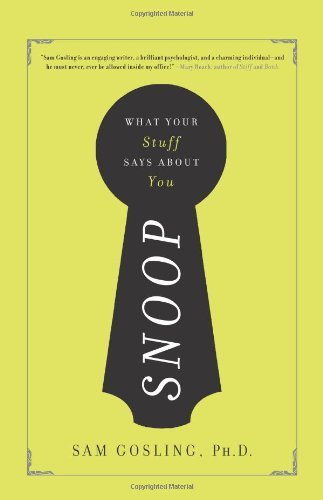What do you think?
Rate this book


Packed with original research and a wealth of fascinating stories, Snoop is a captivating guide to our not-so-secret selves, and reveals how intensely connected we are to the places in which we live and work.
263 pages, Hardcover
First published January 1, 2001
